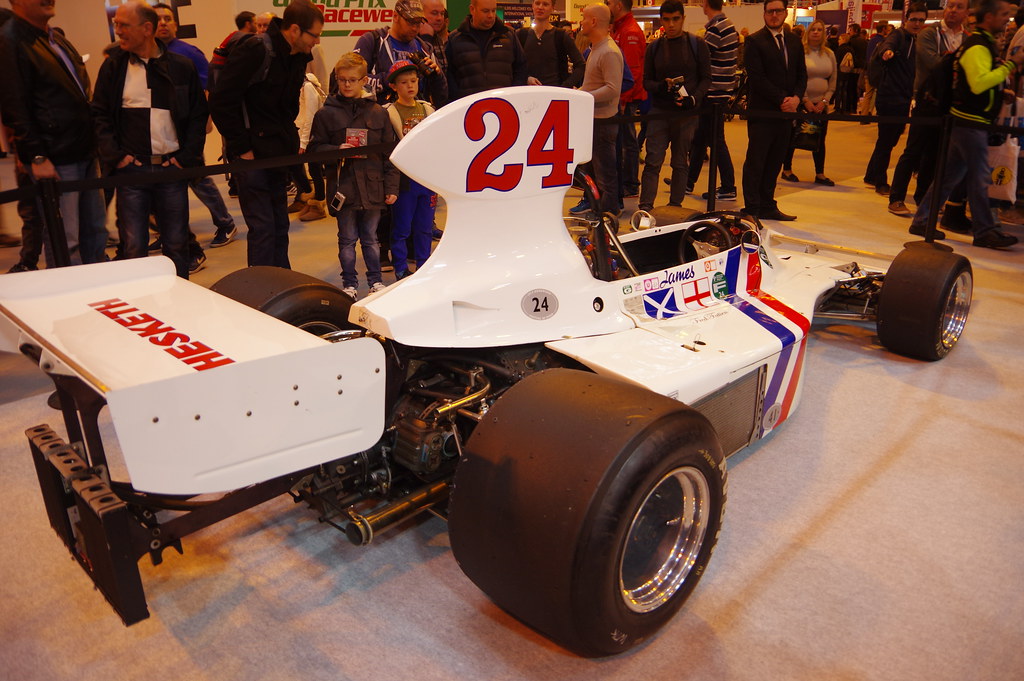During the 1970’s, Formula 1 has seen some incredible talent with the likes of Jackie Stewart, Niki Lauda, Emerson Fittipaldi or even Mario Andretti. These Legends would go down in the sports’ history by being world champions. The teams such as Ferrari, Lotus, Mclaren, Tyrell were battling each other on track, for only one objective, winning. The 1970’s also saw the last stand of the romantic privateer spirit and no team embodied the private spirit more than Hesketh Racing. The Hesketh 308, a Formula One car that would become a cult legend and carry a young James Hunt to his first ever win in the pinnacle of motorsport.
Origins of the Hesketh 308 (1974)
The Hesketh 308 debuted during the third race of the 1974 championship, replacing the team’s previous March 731. Determined to build a car worthy of competing with the sport's titans, the team founder, Lord Alexander Hesketh, entrusted talented designer Harvey Postlethwaite to craft a bespoke F1 chassis: the Hesketh 308. Built around a traditional aluminum monocoque and powered by the Ford-Cosworth DFV V8 engine, the car was simple yet effective. It featured clean aerodynamic lines and a well-balanced design, though initially lacked the refinement of more established teams' machinery.
The team had already made waves with their unconventional attitude, famously rejecting corporate sponsorship and bringing a refreshing irreverence to the paddock. James Hunt, already turning heads for his raw speed and fiery temperament, drove the 308 with impressive determination. Despite being underdogs, the team managed to finish 6th in the constructor championship with 3 podiums during the season all scored by James Hunt, who finished the season, 8th in the Drivers' Championship.
 Triumph in 1975: The Hesketh 308B
Triumph in 1975: The Hesketh 308B
For the year 1975, Hesketh Racing had two drivers during the year, with James Hunt competing in 12 races and Brett Lunger competing in 3 races. Harvey Postlethwaite refined the design of the Hesketh 308 into the Hesketh 308B. The revised car featured aerodynamic tweaks and improved suspension geometry, making it lighter and more responsive. The engine was still the same, the Ford DFV engine, with the team's growing experience meaning better setups and reliability.
The 1975 season marked the high point for Hesketh Racing. James Hunt scored points regularly with some impressive 4th place at the British Grand Prix, 3 2nd place finished at the Argentinian, France and Austrian Grand Prix but mostly the crowning moment at the Dutch Grand Prix in Zandvoort, where he held off Niki Lauda's dominant Ferrari to take Hesketh’s first and only Grand Prix victory in Formula 1. It was an impressive result for a small, privately funded team that had beaten the legendary team of Maranello. It was also James Hunt first ever win in Formula 1.
The End of the Dream
Despite the growing success of the team, financial pressures mounted. Lord Hesketh steadfastly refused to accept corporate sponsorship and without major funding, the team could not build on its momentum. At the end of 1975, Hesketh Racing folded and James Hunt went to McLaren where he would win the 1976 World Championship.
The Hesketh 308 and 308B marked the end of an era. They were the last competitive Formula 1 cars built by a team that truly raced for the love of it, in an age before the commercialization of the sport fully took over.
Legacy
Today, the Hesketh 308 is remembered not just for its elegant engineering and for being the car with which James Hunt won his first Grand Prix win, but for the spirit it embodied. This car represented a rebellion against the big names of motorsport.
In the annals of Formula 1, the Hesketh 308 remains a symbol of racing’s romantic soul.

